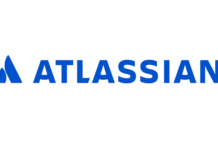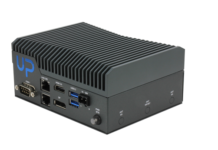
Today, the evolution of artificial intelligence has provided us with incredible tools that can help to detect asbestos in our homes, schools, and workplaces. AI-based technologies have been developed which are able to identify asbestos quickly and accurately without the need for physical samples or intrusive testing methods.
Taking an asbestos awareness course Canberra can provide you with the knowledge you need to understand asbestos and how best to avoid it. However, combining your knowledge with AI technology can help you detect hidden deposits of the deadly material in areas where it may be hard to reach or identify manually.
Below are some of the ways AI technology is helping to detect asbestos worldwide.
The Marvin Microscope System in Australia
The Marvin Microscope System, hailing from Australia, is an innovative solution that revolutionizes the detection of asbestos. This AI-based tech marvel combines microscopy with powerful machine learning algorithms. It analyzes microscopic images of materials to detect asbestos fibers that are often missed by the human eye.
What makes Marvin stand out from the crowd is its ability to significantly reduce the time taken for asbestos testing. Traditional methods can take days to get the results, but with Marvin, it’s as quick as a hop, skip, and jump! Furthermore, its precision is unparalleled, reducing the risk of false negatives, which can pose severe health risks.
And it doesn’t stop at detection – Marvin also quantifies the amount of asbestos in a sample, providing comprehensive information to help make informed decisions about asbestos management. So, thanks to Marvin, Australians can sleep a little more soundly at night, knowing their homes and workplaces are safer. All hail the power of AI!
Aerial and Satellite Surveillance in Spain
Over in sunny Spain, the fight against asbestos has taken to the skies! In this innovative approach, AI is combined with aerial and satellite surveillance to detect asbestos, particularly in rural areas and old buildings. This technique uses sophisticated AI algorithms that analyze images captured by drones and satellites, looking for the tell-tale signs of asbestos.
But how does it work, you ask? Well, buckle up! The AI is trained to recognize the unique spectral signature of asbestos, which is like the fingerprint of light reflected off different materials. When the surveillance system spots this signature, it raises the alarm, identifying potential asbestos hotspots.
This method is a game-changer, particularly for those hard-to-reach areas. Previously, surveyors would have to inspect each building, a time-consuming and costly process manually. With this aerial surveillance system, large areas can be surveyed quickly and efficiently, ensuring no stone (or, in this case, roof) is left unturned.
What’s more, this technology can also assist in the planning and execution of asbestos removal operations. Providing a bird’s eye view of the affected area enables teams to strategize and carry out the removal process more effectively.
So, not only is this system a great detective spotting the hidden villain, it’s also an excellent strategist, making the world a safer place, one tile at a time!
Asbestos Cancer Detection in the US
When asbestos fibers are released into the air, they can be inhaled or swallowed, lodging themselves into the lining of the lungs, abdomen, or heart. These tough, needle-like fibers are resistant to the body’s natural defense mechanisms, enabling them to remain in the body for years, sometimes decades.
Over time, the relentless irritation and inflammation they cause can lead to genetic changes in the body’s cells. These changes can eventually result in the development of Mesothelioma, a rare and aggressive form of cancer.
In the United States, AI technology has been employed to tackle this health menace head-on. By creating sophisticated algorithms capable of detecting early signs of Mesothelioma, medical professionals can diagnose and treat the disease before it progresses to an advanced stage.
The end goal? To drastically improve prognosis and survival rates, turning the tides in the battle against asbestos-related diseases.
Conclusion
In the fight against asbestos and its devastating health impacts, Artificial Intelligence has proven to be an invaluable ally. From the detection of asbestos in buildings and homes to the early diagnosis of asbestos-related diseases, AI is revolutionizing the way we tackle these challenges. The integration of AI technology not only enhances accuracy but also facilitates swift action, which can be life-saving in many instances. It’s like having our very own superhero in the battle against the asbestos menace! As we continue to innovate, we can only anticipate further advancements that will make our world safer and healthier.


















